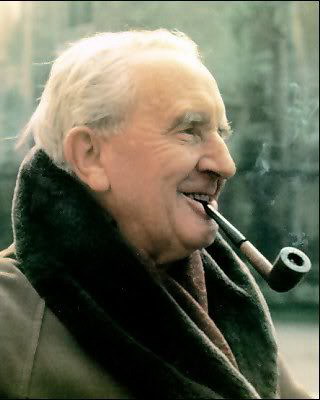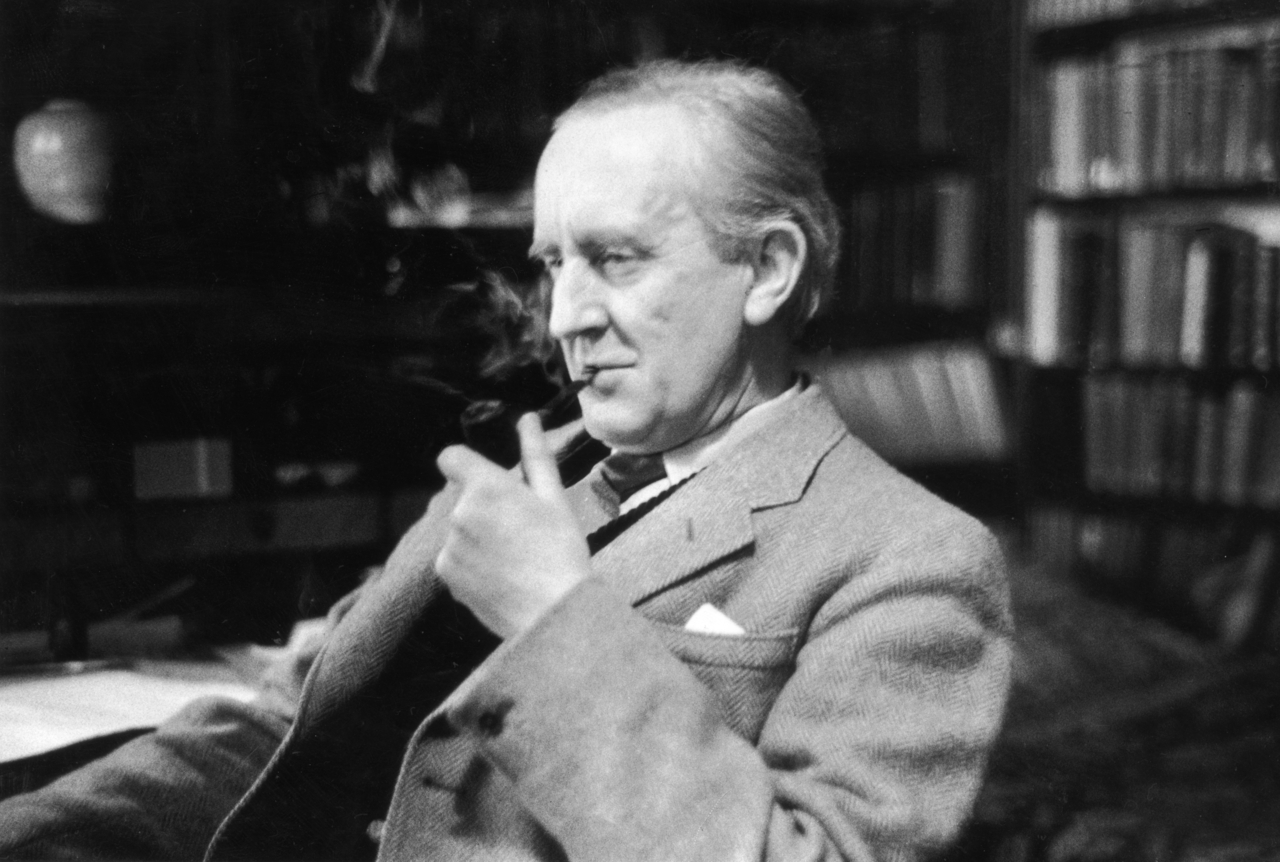January 3 - the birthday of John Ronald Reuel Tolkien

January 3, 2015 marks 123 years since the birth of the famous writer, poet, philologist, professor at Oxford University, John Ronald Reuel Tolkien. It was he who gave the world the wonderful books "The Hobbit, or There and Back", "The Lord of the Rings" and "The Silmarillion", which formed a modern look at works in the fantasy genre.
John Tolkin was born on January 3, 1892 in Bloemfontein, a city that is now part of South Africa, and formerly part of the Orange Free State, an independent state that later became a province within South Africa. His parents arrived in South Africa shortly before his birth in connection with the promotion of his father in the service.
As a child, Tolkien bit the tarantula. The sick boy was cared for by a doctor named Thornton Quimby, and is believed to have served as a prototype for Gandalf the Gray.
')
In February 1896, after the death of her father, the Tolkien family returned to England. The writer's mother, Mabel Tolkien, was left alone with two young children in her arms and with a very modest income, which was just enough to live on. In an effort to find support in life, she plunged into religion, adopted Catholicism and gave children an appropriate education, with the result that Tolkien remained a deeply religious person all her life.
Mabel also taught her son the basics of the Latin language and instilled a love of botany, so Tolkien loved to paint landscapes and trees from an early age. By four years, thanks to the efforts of the mother, baby John was already able to read and even wrote the first letters. Tolkien's mother died of diabetes in 1904, before her death, she entrusted the raising of children to her father Francis Morgan, a priest of the Birmingham Church, a strong and extraordinary person. It was Francis Morgan who developed an interest in philology in Tolkien, for which he was subsequently very grateful to him.
In 1900, Tolkien entered King Edward's school, where he learned Old English and began to study others - Welsh, Old Norse, Finnish, Gothic. He soon showed up linguistic talent, after studying Old-German and Finnish languages, he began to develop "elven" languages.
In 1908 he met his future wife Edith Mary Brett, who had a great influence on his work. The engagement took place in Birmingham in January 1913, and the wedding took place on March 22, 1916. The couple lived together for 56 years and raised 3 sons and a daughter.
In 1914, Great Britain entered the First World War. In 1914, Tolkien enrolled in the Military Training Corps in order to delay the call for military service and have time to get a bachelor's degree. In 1915, Tolkien graduated with honors from the university and went to serve as a lieutenant in the regiment of Lancashire riflemen; John was soon called to the front and participated in the First World War.

John survived the bloody battle on the Somme, where his two best friends from the Cheka (the "tea club") died, then he hated wars, fell ill with typhus and after a long treatment was sent home with a disability. He devoted his subsequent years to a scientific career: he first taught at the University of Leeds, in 1922 he became a professor of the Anglo-Saxon language and literature at Oxford University, where he became one of the youngest professors (at the age of 30) and soon earned a reputation as one of the best philologists in the world.

At the same time, he began writing a cycle of myths and legends of Middle-earth, which would later become "The Silmarillion". There were four children in his family, he composed for the first time for them, told, and then wrote down The Hobbit, which was later published in 1937 by Sir Stanley Anwin. The Hobbit was a success, and Anuin suggested Tolkien to write a sequel; however, work on it took a long time and the book was completed only in 1954, when Tolkien was about to retire.

The Lord of the Rings was published and was a great success, which surprised the author and publisher a lot. Anuin expected that he would lose considerable money, but he personally liked the book very much, and he really wanted to publish the work of his friend. For convenience of publication, the book was divided into three parts, so that after the publication and sale of the first part, it became clear whether the rest should be printed.
In 1945, Tolkien became a professor of English and literature at Oxford Merton College and remained in that position until his retirement in 1959. For many years he worked as a third-party examiner at University College Dublin. In 1954, Tolkien received an honorary degree from the National University of Ireland.
In 1948, Tolkien finished work on the novel The Lord of the Rings — almost a decade after the first draft. He offered the book to Allen & Unwin. According to Tolkien, at the same time with The Lord of the Rings, the Silmarillion should have been published, but the publisher did not agree to that. Then in 1950, Tolkien offered his work to Collins, but Milton Waldman, an employee of the publishing house, said that the novel "is in dire need of cuts." In 1952, Tolkien again wrote to Allen & Unwin: "I will be happy to consider the possibility of publishing any part of the text." The publisher has agreed to publish the novel entirely, without cuts.
In the early 1960s, The Lord of the Rings was released in the United States with the permission of Tolkien by Ballantine Books and had a stunning commercial success. The novel got on the fertile ground: the young people of the 1960s, fascinated by the hippie movement and the ideas of peace and freedom, saw in the book the embodiment of many of their dreams. In the mid-1960s, the "Lord of the Rings" is experiencing a real "boom." The author himself admitted that he was flattered by success, but eventually tired of his popularity. He even had to change the phone number, because the fans bored him with calls. In 1961, Clive S. Lewis was bothering to give Tolkien the Nobel Prize in literature. However, the Swedish academics rejected the nomination with the wording that Tolkien’s books "can in no way be called high-class prose."
Back in childhood, John and his comrades invented several languages to communicate with each other. This passion for learning existing languages and constructing new ones has remained with him for life. Tolkien is the creator of several artificial languages: Quenya, or the language of the high elves; Sindarin is the language of the gray elves. Tolkien knew several dozen languages, he made new languages, largely guided by the beauty of the sound. He himself said: “No one believes me when I say that my long book is an attempt to create a world in which a language that corresponds to my personal aesthetics might be natural. However, this is true. "
Tolkien's Lord of the Rings was repeatedly screened, first in the form of animated films by Ralph Bakshi (Lord of the Rings, 1978) and Rankin Bass (The Return of the King, 1980), and in 2001-2003 Peter Jackson shot the high-budget blockbuster "The Lord of the Rings" as three films who have received many awards and a total of almost $ 3 billion collected at the box office. Subsequently, Jackson took up the screen version of the story "The Hobbit", also in three parts: in 2012, the movie "The Hobbit: An Unexpected Journey" was released, a year later - "The Hobbit: The Waste of Smog", and the trilogy in 2014 ended with the movie "The Hobbit: The Battle Five Hosts.

There is also a animated film adaptation of the Hobbit in 1977. A number of computer games are created from Tolkien’s books and their screen versions, the most famous of which are The Lord of the Rings and The Lord of the Rings Online MMORPG. Of all the participants of the film adaptation of Jackson, only one person personally knew and talked with Tolkien - this is Christopher Lee, the famous English actor born in 1922, starring in more than 250 films.

Many famous fantasy writers admit that they turned to this genre under the impression of Tolkien's epic, such as Robert Jordan, Nick Perumov, Terry Brooks, Robert Salvatore. Contemporary Professor Ursula Le Guin notes the poetry and rhythm of his syllable.
Source: https://habr.com/ru/post/375199/
All Articles